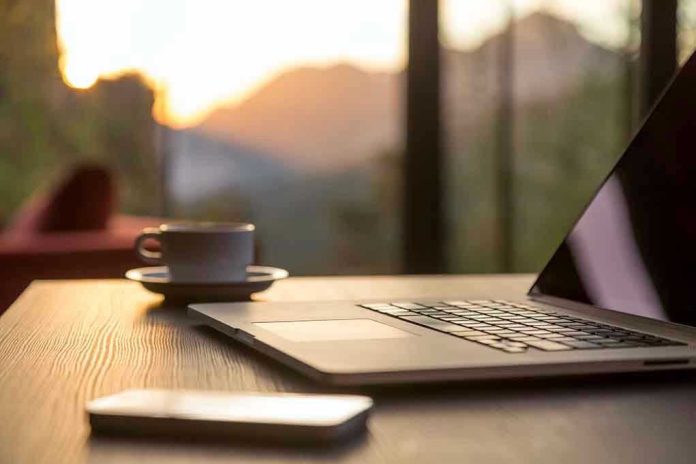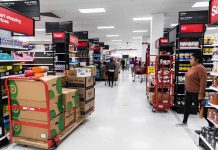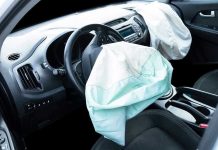
Imagine a world where your morning coffee stain holds the secret to stopping the next pandemic—scientists have just turned this everyday nuisance into one of the most powerful disease detection tools of our time.
At a Glance
- The coffee-ring effect, once an annoyance, is now fueling breakthrough disease diagnostics.
- Researchers have harnessed this natural phenomenon to create ultra-fast, low-cost tests using smartphone cameras.
- This innovation could upend the diagnostic industry, making rapid disease detection accessible to millions worldwide.
- Clinical validation is underway, with early results showing immense promise for healthcare and public safety.
From Coffee Stains to Medical Marvels: The Origins of a Revolution
The coffee-ring effect has long been the bane of every kitchen table—a ring-shaped stain that stubbornly marks your favorite mug’s resting place. But here’s the kicker: what left us scrubbing countertops in frustration is the very phenomenon now promising to revolutionize medical diagnostics. The science is as simple as it is powerful. As a droplet dries, particles migrate outward and form a concentrated ring. This process, first dissected in labs in the late 20th century, has been studied for decades due to its oddball physics and implications for everything from inkjet printers to nanotechnology.
During the COVID-19 pandemic, the need for rapid, accurate, and affordable disease detection reached a fever pitch. The coffee-ring effect, once a curiosity for physicists and engineers, suddenly became the linchpin in a race to democratize diagnostics. Researchers realized they could use this natural particle-concentrating effect to create test spots teeming with biological markers, making them easy to spot with nothing more than a smartphone camera. The result: a diagnostic platform that is quicker, cheaper, and more accessible than anything the entrenched, big-money lab testing industry has ever offered.
How It Works: Turning Annoyance into Advantage
Researchers from top-tier universities—including Monash, Cambridge, and the University of Nevada, Reno—joined forces and cracked the code behind this seemingly mundane stain. By carefully controlling how biological samples like blood or saliva dry on a specially treated surface, they can force critical disease markers to collect at the edge of the droplet. As the fluid evaporates—no fancy machines, no armies of technicians—everything the test needs to find gets funneled into a neat, concentrated ring.
Here’s where the innovation kicks into high gear: a smartphone camera, now a staple in every American’s pocket, is all it takes to read the results. No more waiting days for a lab report. No more $200 bills for a simple test. The proof-of-concept models have already flagged infectious diseases and a slew of other health conditions in mere minutes. And who benefits? Everyday people, not just those with elite insurance or access to big-city hospitals. If anything, this is a return to common sense—putting powerful tools back in the hands of individuals and families, not bureaucrats or corporate gatekeepers.
Implications: Disrupting an Industry and Serving the People
Let’s not kid ourselves: the entrenched interests in the medical testing industry are not going to welcome this with open arms. Billions of dollars flow through centralized labs that thrive on expensive, complicated machinery and opaque billing. But this technology threatens to blow the doors off that model. Early economic analyses predict sharp declines in diagnostic costs and a surge in access, particularly for rural, underserved, or low-income communities who have been perpetually left behind by the status quo.
Healthcare providers and public health agencies are eyeing this development with cautious optimism. The short-term payoff is obvious—faster outbreak detection, better disease surveillance, and a shot at finally leveling the playing field in healthcare access. The long-term implications are even more profound: a new era of decentralized medicine where the power to protect health isn’t funneled through government middlemen or corporate giants, but returned to ordinary citizens. Yes, there are regulatory hurdles ahead, and the system will have to prove itself through rigorous clinical trials. But make no mistake, the days of waiting for lab results while bureaucrats twiddle their thumbs could soon be over.
Expert Voices: Promise, Caution, and the Return of Common Sense
Industry experts are almost giddy about the elegance of this solution—taking a phenomenon as old as spilled coffee and turning it into a lifeline for millions. Theoretical physicists and engineers have long known the coffee-ring effect had hidden potential; now, biomedical innovators are running with the ball. Of course, the usual suspects raise their hands: Will it work in the real world? Will people know how to use it? These are fair questions, but they’re also the kind of hurdles that have always been solved when the incentives are right and the need is urgent.
What’s truly refreshing is how this breakthrough slices through the noise of overregulation and medical bureaucracy. Instead of another bloated, taxpayer-funded boondoggle, we’re seeing a return to ingenuity, thrift, and personal responsibility. The science is sound, the prototypes are working, and the only thing standing in the way is the willingness of regulators and industry to get out of their own way. If common sense prevails, this coffee stain may one day be remembered as the unlikely hero that brought sanity—and liberty—back to American healthcare.














